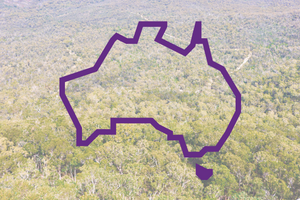Greenspace and air pollution datasets available for data sharing

11 October 2021
The Australian Longitudinal Study on Women’s Health is pleased to announce the availability of new environmental datasets that will allow researchers to assess the associations between environmental exposures and health outcomes in ALSWH cohorts.
Geocoding is performed confidentially by the Hugo Centre for Population Studies at the University of Adelaide. De-identified geocodes and/or postcodes are used to generate other measures which can be used by researchers.
Associate Professor Luke Knibbs, from The University of Queensland, used geocoded data from the ALSWH and MatCH studies (i.e. latitude and longitude of each residential address) to develop an exposure database for air pollution, road, and green space variables. The ALSWH is grateful to A/Prof Knibbs and his project team for this generous contribution.
Air Pollution & Road Variables
The following air pollution and road variables are linked to the geocoded residential addresses of ALSWH participants from 1996 to 2017.
- Annual mean nitrogen dioxide (NO2) for each year from 1996 to 2017 (inclusive).
- Annual mean fine particulate matter (PM2.5) for each year from 1998 to 2016 (inclusive).
- The total length of roads in circular buffers with radii of 100, 200 and 500 m.
- The straight line distance from each address to the nearest road. Estimates are presented for all road types (‘ROAD_DIST_ALL’) and major roads only (ROAD_DIST_MAJOR), based on standard Australian road classifications.
Greenspace
Two indicators of greenspace have been estimated and linked to the geocoded residential addresses of ALSWH participants from 1994 to 2018.
- annual average normalized difference vegetation Index (NDVI)
- annual average non-photosynthetic vegetation fractional cover
Additionally, the percentages of parkland in different buffers have been estimated based on census land-use classifications available since the 2011 census (2011 and 2016). These estimates are available for researchers using the ALSWH data.
Using ALSWH Environmental Data
There are no costs payable for non-commercial research-related use of these estimates by approved researchers.
It is expected that any academic publications (journal articles, conference papers, book chapters, etc.) that use these air pollution, roads, or greenspace data offer the data contributor, A/Prof Luke Knibbs, the opportunity to be a co-author. Apart from recognition of the work of the contributor, this is also a way to ensure the data are applied and interpreted in the most valid way, which benefits users and saves time..
More information
For more information on the variables please visit the Environmental Data section of the ALSWH Data Dictionary Supplement.
For more information on the participant privacy policy please visit the Participant Privacy Policy Page.

